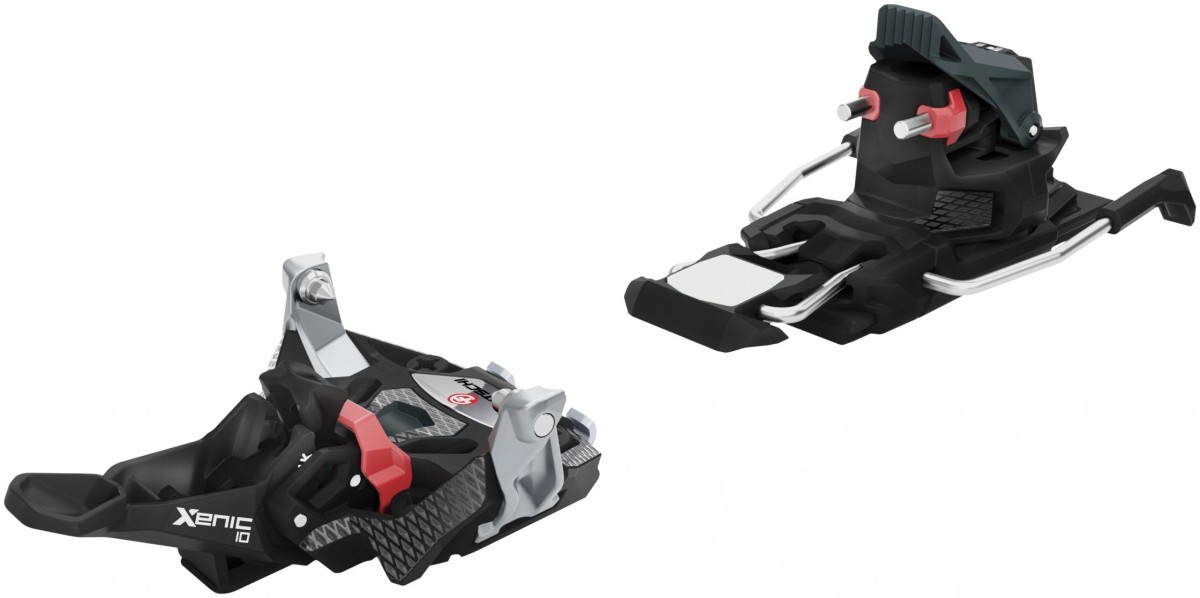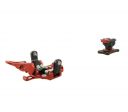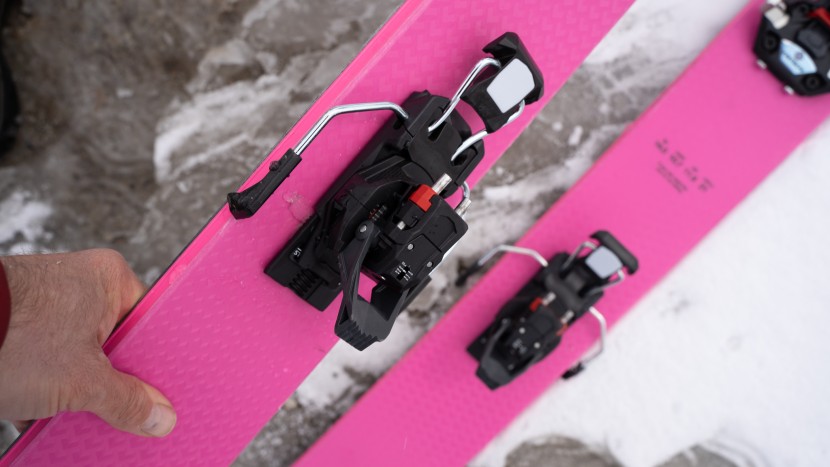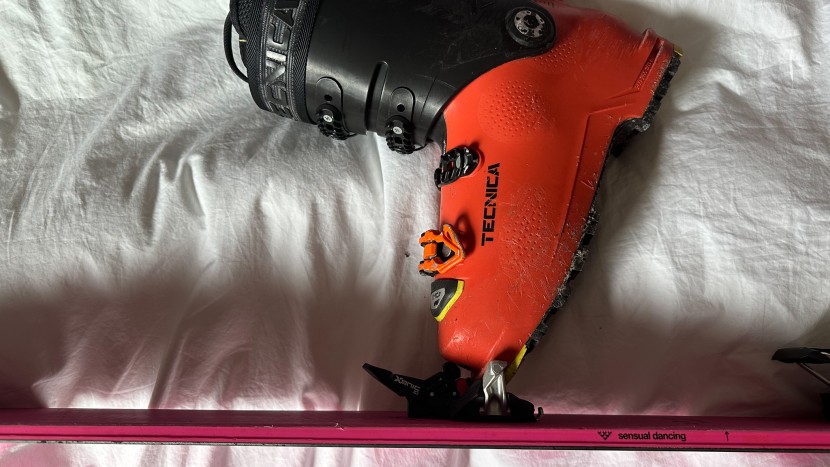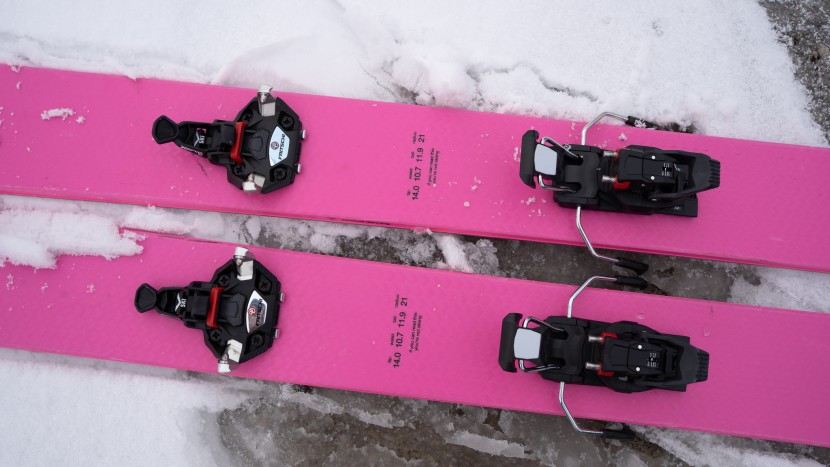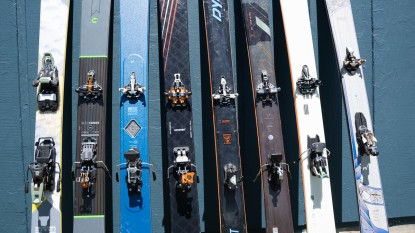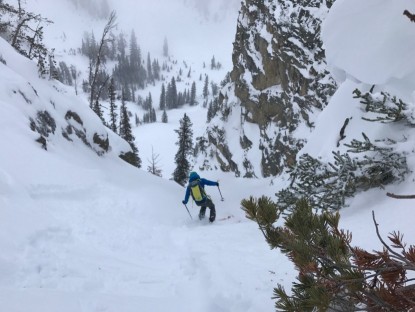Fritschi Xenic 10 Review
Our Verdict
Compare to Similar Products
 This Product
Fritschi Xenic 10 | |||||
|---|---|---|---|---|---|
| Awards | The Other Best Binding | Best Bang for the Buck | |||
| Price | $520 List | $445 List | $600 List $479.96 at Backcountry | $430 List | $280 List $279.95 at Amazon |
Overall Score  |
|||||
| Star Rating | |||||
| Bottom Line | With a little refinement, the Xenic model could be a viable contender for lightweight, all around, full function AT bindings | For moderate backcountry skiing, these bindings could be just the ultralight ticket you need | This binding has a carefully tailored selection of the features you need while keeping weight to a minimum. The result is an excellent binding for any backcountry skier | We like the basic, simple design and included features. However, we didn't like the movement within the binding | An affordable tech binding that has seen iterative improvements over the decades, yet remains reliable and highly durable |
| Rating Categories | Fritschi Xenic 10 | Plum R170 | Salomon MTN Summit... | Dynafit Seven Summits+ | Dynafit Speed Turn |
| Weight (35%) | |||||
| Downhill Performance (25%) | |||||
| Touring Performance (20%) | |||||
| Ease of Use (15%) | |||||
| Construction Quality (5%) | |||||
| Specifications | Fritschi Xenic 10 | Plum R170 | Salomon MTN Summit... | Dynafit Seven Summits+ | Dynafit Speed Turn |
| Weight of 1 binding and screws, lightest possible configuration (in grams) | 308 | 199 | 310 | 325 | 364.5 |
| Release Value Range | 4 to 10 | 8 Fixed | 6 to 12 | 4 to 10 | 4 to 10 |
| Brakes? | Optional | No | Optional | Yes | No |
| Brake Width Options | 85, 95 or 105 mm | N/A | 80, 90, 100, 110 mm | 98, 110, 120 mm | N/A |
| Weight of 2 bindings, common setup (pounds) | 1.57 | 0.88 | 1.86 | 1.76 | 1.61 |
| Weight of 2 bindings (in grams). Multiple options are noted where we have tested multiple options. | 710 (615 without brakes) | 398 | 843 (600 without brakes) | 800 (650 without brakes) | 729 |
| Stack height: average of toe and heel pin height (in mm) | 37 | 34 | 38 | 40.5 | 37.5 |
| Toe/heel delta: difference in height between heel pins and toe pins (in mm) | 10 | 4 | 8 | 13 | 17 |
| Meets ISO/DIN Standard? | Yes | Yes | No | No | Yes |
| Ski Crampon compatible? | Only Fritschi brand. | With aftermarket part. Best with Plum brand. "Standard" Dynafit/B&D style ski crampons can be lightly filed to work. | Yes. "Standard" style. Not all crampons will be cross-compatible | Yes. "Standard" style. Not all crampons will be cross-compatible | Yes. "Standard" style. Not all crampons will be cross-compatible |
Our Analysis and Test Results
The Fritschi Xenic 10 binding, which is distributed by Black Diamond in the US, is a relatively lightweight, nearly “full function” option. It has some usability and durability issues, but it is inexpensive, considering the features.
Weight
As tested, with 105mm brakes, one of the Fritschi Xenic bindings weighs 355 grams. There are lighter bindings on the market, but few of them have the features that the Xenic does. Only our highest award winners have more features at a lower weight. This “weight point” is where most should be focusing their shopping, for general, beginner-to-intermediate, day-to-day backcountry skiing.
Downhill Performance
In assessing downhill performance of an AT binding we look mainly at whether it does its most basic job; does it securely hold toe and heel during normal ski stresses? All tested bindings do this well. Of course, there are many anecdotes out there documenting touring binding failures. These are, whether the storyteller will admit to it or not, largely the result of user error. Used with attention, modern touring bindings effectively hold your ski in normal to high energy skiing. Beyond the basics we look at boot retention, elasticity, and release characteristics. The Black Diamond Xenic is not TUV/DIN certified, but it has multiple release angles and can be adjusted across a range of release values. The heel piece functions with a sort of simulated “forward pressure”, much like a growing number of touring bindings on the market. We haven't noticed significant improvement in downhill performance from this “zero gap” forward pressure solution, but it also doesn't hurt.
Touring Performance
The Fritschi Xenic has two heel lifter levels (flat and mid mode) and features barely adequate — but not a lot — of toe pivot range of motion. The construction is predominantly plastic and relatively complex, for the weight. These two things together make the Xenic more prone than average to collecting snow and ice. Finally, the toe piece has more sophisticated downhill release than other bindings of similar weight. This means that it also flexes more in touring. Not as much as the beefier Fritschi bindings on the market, but enough that a discerning user will notice and find it undesirable. Other bindings will tour better.
Ease of Use
Transitions, adjustments, and stepping in and out, how does the Fritschi Xenic do? Transitions are pretty typical. The heel lifter swaps in and out with a pretty easy pole flick. The heel piece must be spun to swap between uphill and downhill mode. Further, the brake has to be manipulated at transitions from downhill to uphill mode. These changes are slightly more physical than with other bindings. The springs are relatively stiff, even on the 4-10 release value model we tested. The beefier version will be even more strenuous in transitions. Speaking of physically demanding… locking the toe pieces into tour mode is very strenuous. Even the rock climbers on our test team (with strong fingers) found it difficult. One was concerned that they would injure finger soft tissue during such transitions. We aren't the only online reviewers of the Xenic to cite such strenuous toe lock moves.
Construction Quality
We broke a piece within one toe of the Fritschi Xenic. The part with “Ski” written on it broke off and floated around beneath the toe lock lever. It broke during seemingly normal use. Our tester at the time doesn't remember it breaking. It continued to work for that tour, but all confidence was lost until we got a warrantied toe piece replacement from Black Diamond. Locking that toe lever requires a great deal of force, as noted above. None of our testers think we could tell the difference between pulling that lever to lock the toe as designed and pulling that lever in such a way as to break something.
Should You Buy the Fritschi Xenic?
It's available at a reasonable price and has many of the features you might be looking for. The weight is acceptable to good, given the feature set. That said, though, its usability and durability leave something to be desired. With the dozens of bindings available on the market, you would have to pass by more functional and proven bindings to choose the Xenic. This is not one we recommend highly.
What Other AT Bindings Should You Consider?
If you like the weight range and full feature set of the Black Diamond Xenic you have to consider either Editors Choice winners. The Atomic Backland Tour has slightly less sophisticated release function, but is also lighter and adds another heel lifter height. The Marker Alpinist is slightly heavier but simulates the release and retention characteristics of the Xenic and adds a third heel riser height.


